Retailers are using multiple channels where shoppers can interact and purchase as the purchasing journey becomes less and less linear. Omnichannel retailing is when sales channels work together to form a cohesive customer experience (customer-first approach to building a brand). Meanwhile, multichannel retailing is when a retailer has multiple sales channels that are siloed (product-first approach that focuses on sales and exposure).
When comparing multichannel vs omnichannel retailing, consider whether it’s more important to your business to offer the best possible customer experience or get your product in front of the widest audience possible.
- Omnichannel: Best for offering a seamless customer experience; ideal for most independent retailers
- Multichannel: Best for getting products in front of the widest possible audience; ideal for direct-to-consumer (DTC) brands, startups with single product lines, consumer packaged goods (CPG) brands, and health and beauty products
Let’s take a closer look.
Omnichannel vs Multichannel Retail: Quick Comparison
Omnichannel Retailing | Multichannel Retailing | |
|---|---|---|
What is it? | A cohesive strategy through all channels and revolves around a customer | A sales-first strategy that involves many channels and revolves around a product |
Key differences | Customer-centric; Integration of sales channels for a holistic customer journey (customer-based) | Product-centric; Addition of sales channels (channel-based) |
Who is it right for? | Local businesses with ecommerce stores; Businesses with a loyalty program; Retailers and companies with complete control over all of their sales channels | Companies with a single product or product line; Retailers with custom or legacy POS systems; Companies wanting exposure by wholesaling to larger retailers |
Recommended solutions | BigCommerce and Shopify | Square Online and Ecwid |
Omnichannel vs Multichannel Retailing: How Each Works
How Omnichannel Works
Omnichannel retailing delivers a seamless experience from the customer’s perspective. Every interaction they have with a brand—online, in-store, mobile app, and email—connects.
Using the Six Spokes Theory (illustrated below), the omnichannel approach pulls the customer into the center of the wheel (instead of the product), and the spokes are sales channels the customer engages with—websites, emails, retargeted ads, social media marketing, and physical locations.
Instead of separating everything, these channels overlap and communicate with one another so their messages adapt to each customer encounter. It’s interactive and personalized.
To deliver this seamless experience, sellers tie sales and marketing activities in a central data hub, shift to a customer-centric approach in all areas, and employ analytics at all levels.
Let’s explain this approach further:
- A shopper visits a website, adds a product to their cart, and leaves without purchasing. Then, they receive an abandoned cart email containing a discount offer but they ignore it.
- At the same time, they see ads for the product with the same discount offer across social media platforms they frequent—Facebook, Pinterest, Instagram, and YouTube—but these are all distributed throughout one week, so it’s not annoying.
- After a week of non-engagement, the seller changes their strategy and uses a cause marketing approach (social or charitable campaigns). It features ads highlighting its social responsibility efforts with calls to action (CTAs) to check out its donation page. When the shopper sees a YouTube ad of the seller’s supported cause, they finally engage.
- They end up going back to the seller’s website and instead of adding the original product they were interested in, they add a new one of bigger value.
- In response to their new interest, a new round of ads appear along with an email that offers the new product. Instead of a direct offer, a new product is featured and the discount is higher.
- The customer clicks a Facebook ad and enters their shipping information, but decides they want to see it in person before purchasing. So they abandon their cart again.
- An automation is anticipating another abandoned cart, so it detects the customer’s address. A few days later, the shopper gets a mailer with an invite to the seller’s showroom near their location.
- This offer closes the deal. The customer drops by the showroom and purchases the item—their details are captured by a point-of-sale (POS) system that automatically updates their account.
- They receive a “thank you” email a day after purchase and, a week later, an invitation to review the product. These emails are ignored.
- The seller then tries to engage the shopper via a Facebook Messenger invitation to submit a review.
- The customer leaves the seller a five-star review, interacting exclusively through Facebook Messenger.
- Because of the five-star review, the seller’s automation prompts a direct mailer and a Messenger message to tell the shopper about the referral/rewards program.
- In the meantime, all of the social media ads of the purchased product stop—and ads for a complementary new product start.
As you’ll notice, interactions aren’t categorized by channel but by customer behavior. The shopper response triggers a new set of interactions—whether by email, chat, or ads. Each interaction changes the experience.
The well thought out automation engages with what the shopper wants and needs. It’s aligned with the customer’s behavior within and between channels. It’s personalized and customized.
How Multichannel Works
Multichannel retailing is selling products using multiple sales channels. The approach for the customer buying experience is the same and just allows consumers to choose which channel they prefer. It’s flexible, but in reality, takes a single-channel approach since shoppers expect brands to behave within the confines of the channel.
The Six Spokes Theory’s application here has your product at the center of the wheel—with the goal of closing a sale. The spokes are different sales channels where your customers are and offer an independent opportunity to purchase.
Let’s walk through how the multichannel retail approach works:
Channel 1: Website
- A customer visits a website to browse, with some intention to purchase. They get a coupon for $50 off from a pop-up window.
- They use the coupon and add to their cart, but abandon it after much thought.
- Before exiting the website, an exit intent pop-up appears, enticing them further with a coupon to be sent if they join the mailing list. They subscribe.
- They get an abandoned cart recovery email and the same offer afterward.
- Customer still doesn’t purchase.
When a customer visits a website, it can retarget them to other channels such as Facebook, Pinterest, or Amazon.
Channel 2: Amazon
- Customer sees the product in the related or recommended products sections.
- Once they click on the product, it will take them to the same product details page seen on the website, but on Amazon. It has the same information—video, description, images, and social proof.
Channel 3: Social media channels
- By investing in Facebook and Pinterest ads, the customer can see ads on those platforms that can drive them to a brand’s site or buy directly from its social media channels.
- On Facebook, the approach is to have customers purchase directly through a Facebook Shop or Buy Button.
- On Pinterest, the customer can buy products through a Buyable Pin.
As you’ll notice, a business offers the same product with the same messaging—without added incentive to buy—across all channels with no trigger other than the customer’s initial purchase intent (on its website). It employs the same strategy and messaging with the end goal of closing a sale. Its approach is to make the product more visible so it stays top of mind, but it doesn’t actively relate to, serve, or encourage the customer to buy.
In multichannel retailing, when you find out which channels resonate best with your target buyers, you can optimize marketing on those channels to maximize sales.
When to Use Omnichannel Retailing vs Multichannel Retailing
Operational Differences Between Omnichannel vs Multichannel Retailing
A comparison of multichannel vs omnichannel is similar—they share many features but approach them differently. Aside from sales channels, features such as omnichannel vs multichannel marketing, customer loyalty programs, and fulfillment are included in these approaches. We explore them more in detail below.
Email Marketing
Email marketing should be a key part of any online marketing program. Top ecommerce platforms let you deliver the omnichannel experience by integrating your sales data with top email systems or even built-in mobile-friendly email marketing.
Connecting your email list to buyer history lets you target emails to customers who have previously purchased certain products or similar items. Using purchase history to target marketing efforts is omnichannel thinking in action and leads to far more sales conversions than a one-size-fits-all approach.
Similar to omnichannel retail, email marketing strategies in a multichannel retail experience allow businesses to see which pages a shopper visits, which links they click, and how they engage with each email. However, it’s not integrated with every channel.
Customer Loyalty Programs
Loyalty programs are an essential feature in omnichannel retailing. Let’s take Starbucks’s loyalty program for example. It delivers rewards points and reloadable payments across whatever media the customer prefers: physical cards or mobile app. Now, small businesses can tap the power of fully integrated loyalty programs using POS systems with built-in programs, such as Square Loyalty.
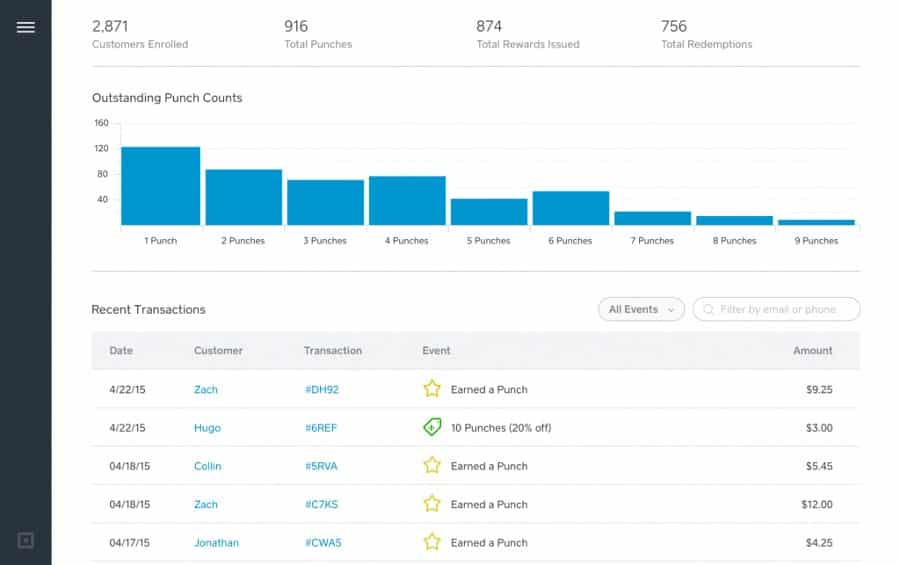
Square Loyalty tracks every element of loyalty program usage in the Square dashboard.
A multichannel loyalty provides customers with a physical coupon at checkout for their next in-store visit. They can’t use this coupon online or over the phone and must present the physical coupon during their next purchase.
Some loyalty programs can have both omnichannel and multichannel elements. To continue the Starbucks example, consumers are unable to use or earn reward points when ordering through a delivery service, like DoorDash or UberEats. By adding the additional sales channels of online delivery apps, Starbucks is sacrificing its omnichannel loyalty strategy in that case in exchange for more sales and exposure.
Customer Service
Cross-training staff helps deliver an omnichannel experience to customers. Store clerks and anyone servicing customers need to understand all of the ways customers connect with the company—they may connect through Amazon first, and then find your website or store.
Having quick access to weekly email specials, knowing how the mobile app works, and being able to look up items and shopper buying history is a start. Familiarity with all sales channels and marketing engagement points allow service staff to assist consumers every step of the way.
A support team that isn’t integrated—phone agents cannot access customer conversations done by email or vice versa—is an example of a multichannel approach here. Each channel maintains its own communication, which can frustrate customers.
Flexible Order Fulfillment & Returns
An omnichannel fulfillment strategy involves using multiple selling channels to fulfill and distribute customer orders, no matter which channel the customer used. Meanwhile, a multichannel fulfillment approach has siloed inventory per channel and orders are only fulfilled from the channel (or branch) it’s assigned to.
Say for example, a customer places an order online. In a multichannel fulfillment approach, they would have to wait for their order to be dispatched from the store’s warehouse for delivery.
However, an omnichannel system can identify a store location that carries the necessary inventory close to the customer’s delivery address. This way, it can offer multiple options for the customer—deliver it the next day or give a BOPIS (buy online, pick up in store) option. This results in a better customer buying experience.
Omnichannel vs Multichannel Examples
Omnichannel Examples
Creating an effective omnichannel retail experience can take time and skills. With the right strategy, a small business may see its profits and customer satisfaction increase. See how these brands implemented great omnichannel retail strategies.
1. Sephora
Knowing your customer’s birthdate allows you to send them a birthday email with a discount or coupon code that can be used online or in stores. Sephora does this really well—offering customers their choice between a variety of birthday coupons. Most of these coupons indicate they must be used during the buyer’s birth month.
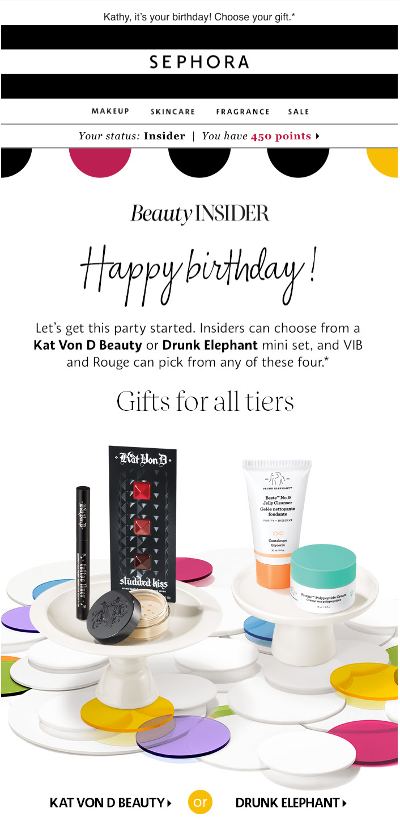
Sephora’s omnichannel approach allows shoppers to show the birthday email in-store or redeem the coupon online. (Source: Sephora)
2. REI
Outdoor and sporting goods retailer REI is more than just a retail store. It’s actually a co-operative, meaning “members” can buy in and receive exclusive perks. To become an REI member, you pay a one-time $30 lifetime membership fee which grants you 10% store credit for all full-priced purchases, access to members-only sales, and frequent discounts and promotions such as a free gift card with qualifying purchase.
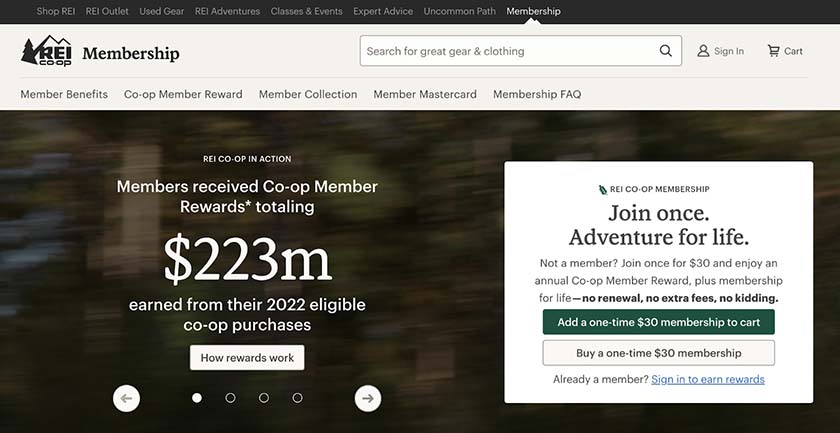
REI co-op lifetime memberships track in-store and online purchases seamlessly.
The best part? REI syncs all the data for online and offline purchases, so your customer account is automatically updated regardless of where you’re shopping.
3. Disney
Disney is the standard when it comes to omnichannel retailing. Its omnichannel experience starts with its website, then goes to the My Disney Experience tool so that people can plan every detail of their trip. A visitor can then use the app to figure out schedules of the rides and attractions and even see the wait times for popular rides once in the park. Disney even provides a MagicBands wristband that lets you unlock hotel rooms, download photos taken by guest members, order food, and more.
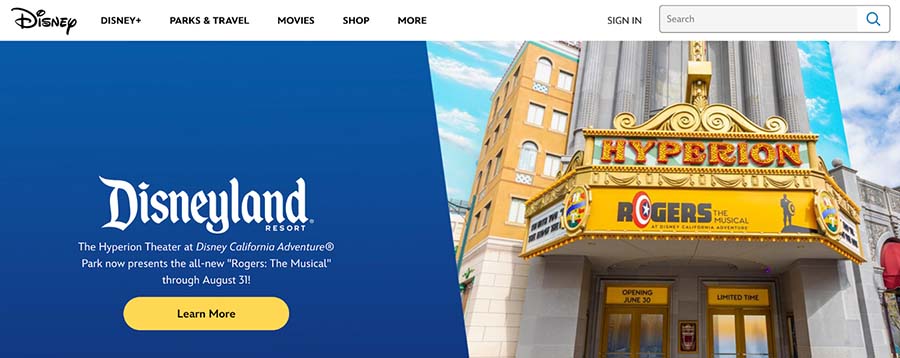
Disney takes the omnichannel retail experience to new heights starting with its website.
4. Apple
Apple is one of the greatest examples of omnichannel retailing done right. It only operates from its physical stores and online website but does wholesale arrangement with big retailers such as Target, Best Buy, and Costco. Even with different sales channels, the consistency of branding within its channels trickles down even to its services and apps. You can also purchase an Apple product from any store in the world and it can still be serviced at its repair center, the Genius Bar.
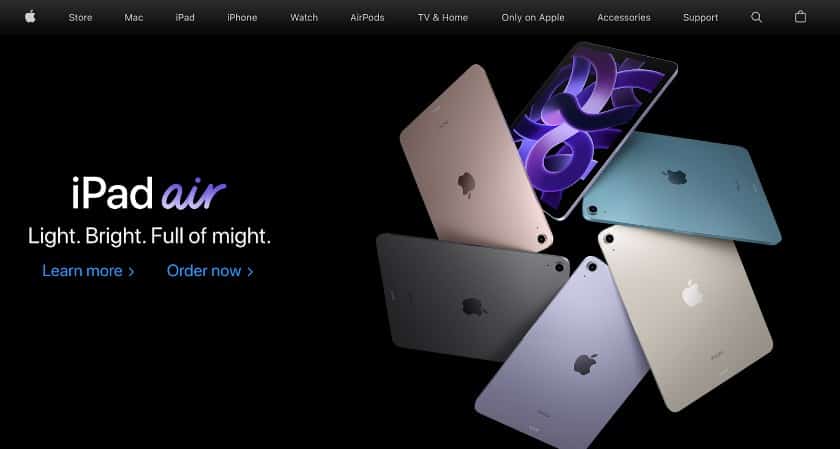
It’s very clear on its focus, with physical branches designed to promote its ecommerce channel. Its brick-and-mortar stores’ mission is to promote brand awareness and support overall customer experience, encouraging customers to go to its online store to buy products if one is out of stock from a branch, for example.
Multichannel Examples
Implementing a multichannel retail approach to your business is easy with the right platforms. Go with a POS system and ecommerce platform that provide native integrations so that adding sales channels is quick and easy. Explore how these companies execute excellent multichannel retail strategies.
1. Murad
Murad is a skincare company with an online store. It doesn’t have storefronts, and its products are sold through other retailers, such as Sephora and Ulta, and salon and spa businesses like Massage Envy. This means any issues with products need to be resolved with the retailer they were purchased from. Murad’s loyalty program is also exclusive to purchases made directly on its website.
And while Murad has virtual consultations and quizzes for product recommendations available on its site, those wouldn’t transfer over if you were to receive a skincare service at an authorized third-party spa that uses Murad.
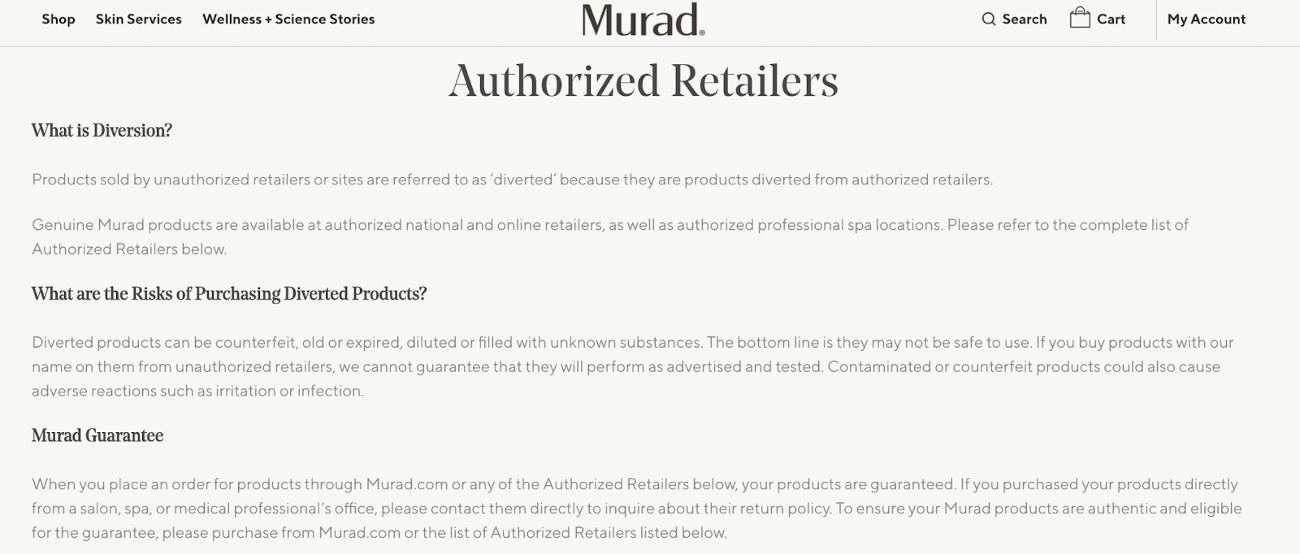
Murad uses a multichannel approach with direct website sales, salon partners, and authorized resellers.
2. Warby Parker
Warby Parker sells prescription and nonprescription glasses and sunglasses via its online and local stores. However, its sales channels don’t integrate, so it uses a multichannel approach.

When you purchase online, Warby Parker ships your order to your address—you don’t have an option to pick it up in-store.
3. Kūla
Sustainable fashion brand Kūla sells its products via digital and in-person channels. Shoppers can purchase items from the brand directly through its Shopify website or at markets and pop-ups. When you make a purchase this way, the brand can add you to its customer database and send email promotions or retarget with ads.
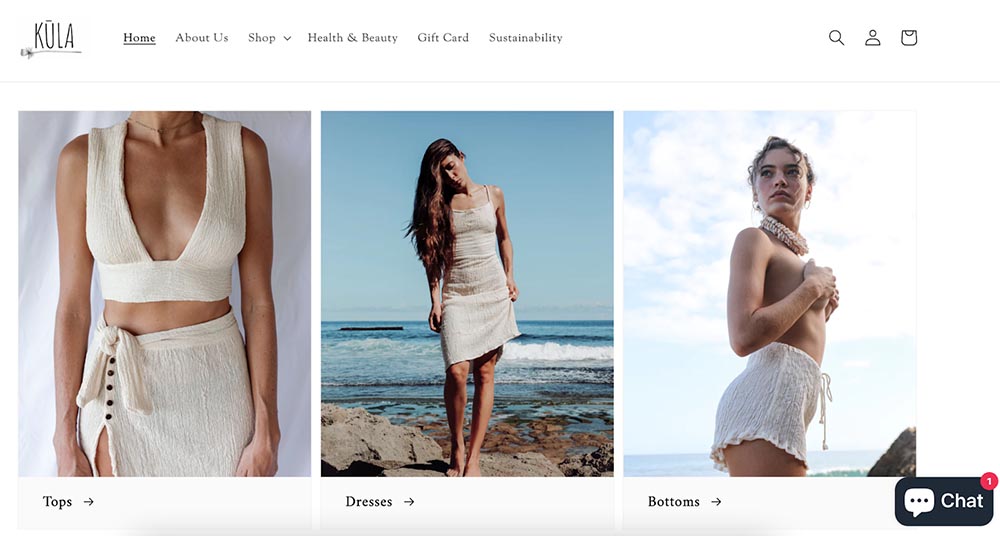
Kūla’s multichannel approach allows the brand to expand further in its local community.
Kūla clothing is also available at select physical retail stores. When a customer purchases a product at one of these locations, they still get the same beautiful designs—but the brand doesn’t get to collect any of that customer data.
4. Caracuri
Caracuri is a jewelry brand that sells via two distinct channels: online via Instagram or in-person at markets, festivals, and events. It doesn’t collect customer data at either point of purchase. Instead, Caracuri siloes its audiences and takes two unique approaches to market to each.

Caracuri takes a multichannel approach that offers the small shop maximum control over sales.
While there’s some crossover between the channels when the brand promotes itself—it’ll commonly post videos to its Story to share about upcoming markets—it doesn’t collect customer data to be able to integrate the two. It also doesn’t have an ecommerce website for customers to buy directly. Instead, it requires customers to visit its table at a market or send a DM to inquire about pricing and purchases.
Omnichannel vs Multichannel Ecommerce & Retail Frequently Asked Questions (FAQs)
Omnichannel order management is when all online and in-person orders are synced in a centralized database. Multichannel order management is when data and operations for order management data are separated by channel.
Omnichannel customer support is when all interactions are centralized so representatives have a full picture of the situation, regardless of the touchpoint. Multichannel customer support is when support channels are siloed by sales channel, so you can only get help for online orders via online support and in-person orders through a different support channel.
An omnichannel example is when a customer visits a website to learn about products and find out in-store inventory availability. They then visit the store and purchase a product. The retailer later retargets that customer with a social media ad for a complementary product.
Bottom Line
Omnichannel vs multichannel retailing are very similar in that they allow you to make purchases and interact with a company in multiple ways. In multichannel retailing, channels don’t integrate; in omnichannel retailing, they do. You can track everything under one roof, cross-train staff, dissolve data barriers, and retrieve detailed analytics with omnichannel, and this customer-focused approach isn’t reserved for enormous companies either.
A product with healthy profit margins has room for an omnichannel retail approach.